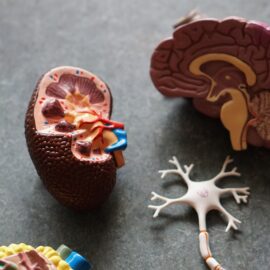

This article is an excerpt from the Shortform book guide to "Outlive" by Peter Attia. Shortform has the world's best summaries and analyses of books you should be reading.
Like this article? Sign up for a free trial here.
When you exercise, do you push your limits? What’s the best way to raise your VO2 max?
According to Peter Attia, VO2 max exercise ultimately enables you to do more challenging physical activities. It also helps you extend your life and its quality. That’s why he recommends it as part of a longevity-focused exercise program.
Read more to learn about the benefits of a high VO2 max and how to achieve it.
Peter Attia on VO2 Max Exercise
According to Peter Attia, VO2 max exercise should be part of your fitness protocol if you aim to live a long and healthy life. Your VO2 max is the volume of oxygen that your body can effectively transport and utilize to create energy while you’re pushing yourself to your physical limits. This number, more than any other, precisely reflects your overall physical fitness. The higher your VO2 max, the more physical activities you’ll be able to perform and enjoy.
Why do you need a high VO2 max to be physically fit? Attia explains that your cells need oxygen to convert glucose and fats into energy. Exercise increases the demand for oxygen throughout your body, and the more intensely you exercise, the more likely it is that your oxygen demand will exceed your VO2 max. At this point, your cells lose oxygen and must resort to less efficient means of energy generation. You’ll hit your physical limit and won’t be able to complete whatever physical activity you’re trying to do.
(Shortform note: Since your cells need oxygen during exercise, you may assume that you should inhale as much oxygen as possible to raise your VO2 max. However, in The Oxygen Advantage, Patrick McKeown argues the opposite: Breathing less is the key to increasing VO2 max. He asserts that your blood needs carbon dioxide to pass oxygen on to the cells that need it. Often, people breathe too heavily while exercising and exhale all their CO2. They then lose the ability to utilize oxygen and become exhausted. Instead, if you habitually breathe less, you can train your body to tolerate more CO2, increasing your VO2 max—thereby helping you accomplish more physical activities as you age.)
VO2 max declines sharply as you age. So, to do all the physical tasks you want to in your elderly years, compensate for this decline by training your VO2 max as much as possible. Attia adds that, aside from enabling an active lifestyle, a high VO2 max will reduce your risk of disease—research shows that VO2 max is strongly correlated with a longer lifespan.
(Shortform note: Attia doesn’t specify why a higher VO2 max in old age would reduce your risk of disease. One simple possibility is that more oxygen to your organs results in better overall health. A low VO2 max might slightly reduce the oxygen supply to various organs throughout your body—not enough to cause any easily detectable symptoms, but enough to increase your vulnerability to chronic disease.)
To improve your VO2 max, Attia recommends a high-intensity interval exercise rhythm: Warm up, then perform four-minute spurts of aerobic exercise at the fastest pace you can steadily maintain for those four minutes. Take four minutes of recovery by exercising at a slow, easy pace. Repeat this sprint-rest cycle four to six times, then cool down. Doing this once a week is enough to gradually raise your VO2 max.
(Shortform note: The rhythm Attia describes here is a form of fartlek. Fartlek is Swedish for “speed play,” and it refers to any exercise in which you alternate between timed periods of strenuous activity and slower recovery. Fartlek is different from typical interval exercises, which require you to cover a certain distance with every rep—for instance, running 12 200-meter sprints with recovery in between. If you’re struggling with Attia’s rhythm, you can work your way up to it with a fartlek that includes more recovery time—two-minute spurts of intense activity followed by four minutes of recovery. As long as you’re pushing yourself to your physical limit, you’re raising your VO2 max.)

———End of Preview———
Like what you just read? Read the rest of the world's best book summary and analysis of Peter Attia's "Outlive" at Shortform.
Here's what you'll find in our full Outlive summary:
- A guide on how to extend the active and fulfilling part of your life
- How to circumvent the mental and physical decline that often comes with age
- The one chronic condition that can cause four of the most deadly diseases






